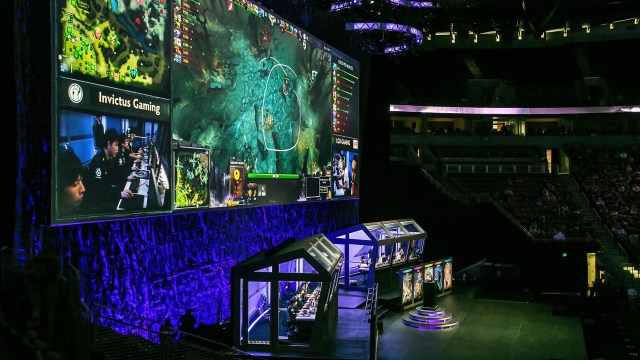The Tragedy Of Apollo 1 And The Lessons That Brought Us To The Moon

The first of the three great NASA disasters — Apollo 1, Challenger and Columbia — happened 49 years ago. Look back.
“If we die, we want people to accept it. We’re in a risky business, and we hope that if anything happens to us it will not delay the program. The conquest of space is worth the risk of life.” –Gus Grissom
At the dawn of the space race, Project Mercury was all the rage. After the launch of Sputnik in 1957, the USA’s response was to put a human into Earth orbit and return them safely, ideally before the Soviet Union. Alan Shepard became the first American in space in 1961 and John Glenn became the first to orbit Earth, but both were beaten by the Soviets Yuri Gagarin and Gherman Titov, respectively. Project Gemini succeeded Mercury: a series of two-person flights, where the first American spacewalk was performed by Ed White (again, behind a Soviet: Alexey Leonov), and where the United States took the lead in the space race over the USSR by performing:
- the first week-long flight,
- the first two-week-long flight,
- the first use of fuel cells for power,
- the first space rendezvous with another vehicle,
- the first space docking with another vehicle,
- setting the new record apogee (distance from Earth), and
- the first demonstration (by Buzz Aldrin!) of an astronaut’s ability to do useful work outside of the spacecraft without suffering exhaustion.
The third crewed spaceflight project — Project Apollo — was about to begin.

The first crew selected was Mercury and Gemini veteran Gus Grissom, Gemini veteran (and first American spacewalker) Ed White, and newly selected astronaut (and former capsule commander — CAPCOM — for Gemini) Roger Chaffee. Chaffee himself was a late selection, substituting for another rookie, Donn Eisele, who twice dislocated his shoulder in training and needed surgery, scheduled for January 27th, 1966. The launch of Apollo 1 was slated for February 21st, 1967, where the first three-person crew would be launched into orbit. It was to be the first low-Earth-orbit test of the new Apollo command and service module, the largest such module ever to carry a living creature into space. It was scheduled to be launched aboard a Saturn IB, a cousin of the famous Saturn V that wound up taking Neil Armstrong, Buzz Aldrin and more than a dozen others up to the Moon.
But that launch never happened. Grissom — mission commander — had declared his intent to keep the module in orbit the full 14 days, six days longer than would be needed to reach, land on, and return from the Moon. A second and third mission were already scheduled, which would have been Apollo 2, which would have launched the Lunar Module, and Apollo 3, which would have launched the Command/Lunar Module together, respectively, aboard a Saturn V rocket, and slated to enter a Medium-Earth Orbit, which would have been the farthest crewed flight from Earth until that day. But tragically, the three astronauts slated to fly Apollo 1, Grissom, White and Chaffee, were performing a launch rehearsal test inside the new three-person module on the one-year anniversary of Eisele’s surgery: January 27th, 1967, 49 years ago. In the span of 26 seconds, everything changed.
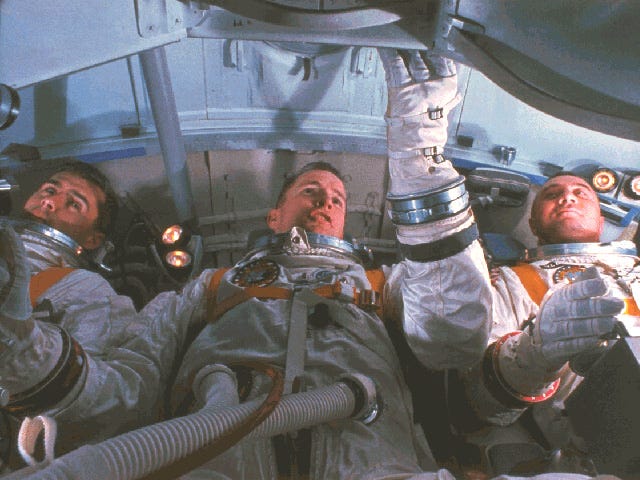
January 27th marked the ”plugs-out” test, where the command/service module was operating with all three astronauts inside under its own power, an essential test for ensuring the spacecraft’s flight worthiness. There was no fuel, no cryogenics, and no known potential hazard to this test. All three astronauts entered the module in fully pressurized space suits, while the cabin was pressurized and filled with oxygen. The three hatches — the removable inner hatch, the hinged outer hatch, and then the outer hatch cover — were then externally installed. A minor communications problem arose in the late afternoon, causing the simulated countdown to stall at T-minus-10 minutes. What happened next was very fast.
At 6:30:54 PM, while the crew was running through their checklist a second time, a voltage spike was recorded. Ten seconds later, at 6:31:04, one of the astronauts exclaimed something inaudible, perhaps “Hey!” or “Fire,” a transmission that came through Grissom’s microphone. Two seconds later, at 6:31:06, Chaffee’s voice was clearly heard, “We’ve got a fire in the cockpit.” Seven seconds after that, at 6:31:13, an unidentifiable, heavily garbled voice yells “[…] bad fire […] get… out […] [open ‘er/burning] up,” followed by an end to the last transmission at 6:31:22. The last image that anyone reported seeing before the transmission ended was Ed White reaching for the inner hatch handle, as the flames swept from left to right across the monitor.

The 100% oxygen environment was the perfect fuel for the flames of the electrical fire, which caused the temperature and pressure inside the sealed cabin to rise tremendously. In a matter of 15 seconds, the command module’s inner wall ruptured, and thick smoke filled the outer bay, preventing the exterior ground crew from rescuing the astronauts trapped inside. It took a full five minutes for the ground crew to open all three hatches, where they found the bodies burned alive inside. Grissom was found lying on the floor, having removed his restraints. White’s restraints had been burned through completely, and he was found lying sideways just below the hatch. But most chillingly, Chaffee was found still strapped into his seat, doing everything he could — as were his orders — to maintain communication until White opened the hatch.
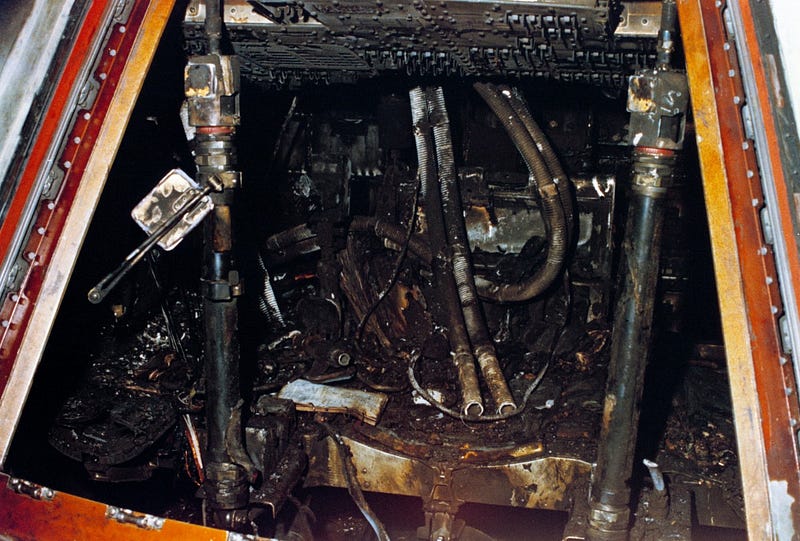
There’s a long story to how this happened. When the spacecraft — the command/service module — arrived at the Apollo Spacecraft Program Office, both the administration manager (Joseph Shea) and the crew expressed a number of concerns, including about the use of nylon netting and velcro (both highly flammable) inside the cabin. While Shea gave the spacecraft a provisional passing grade and ordered the flammable material removed, it never was. In the aftermath, the crew sent Shea the following promotional photo, inscribed with the following message on it:
It isn’t that we don’t trust you, Joe, but this time we’ve decided to go over your head.
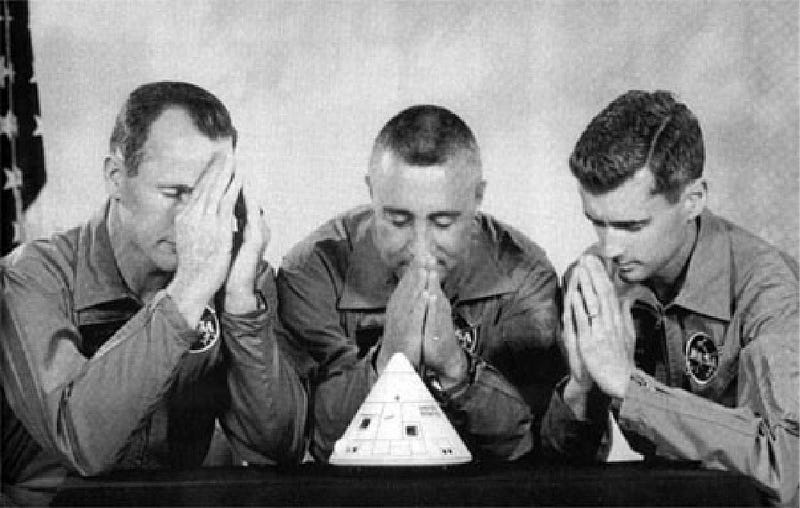
It’s almost never one thing that goes wrong that causes a disaster like this. In this case, the internal review panel found five:
- An ignition source most probably related to exposed electrical wiring and the chemical reactions of silver-plated wires.
- A highly pressurized, 100% oxygen atmosphere inside the cabin.
- The presence of highly flammable materials (which had never been removed, after all) in the cabin.
- A hatch cover which couldn’t be removed internally.
- And inadequate ground preparedness, which prevented the rescue workers from getting to the astronauts inside.
Any one of these, had they been different, might have saved the lives of all three astronauts inside.

As it was, no crewed Apollo missions flew for 20 months after this disaster, with the crew of Apollo 7 finally fulfilling the goals of Apollo 1. Perhaps ironically, one of the astronauts on board Apollo 7 was Donn Eisele, who was supposed to be on Apollo 1 to begin with. Another Apollo 7 astronaut, Wally Schirra, was part of the original Apollo 1 backup crew. In the lead-up to the Apollo 1 test, according to Kluger and Lovell, Schirra stated the following:
There’s nothing wrong with this ship that I can point to, but it just makes me uncomfortable. Something about it just doesn’t ring right.
Meanwhile, a month before the fateful Apollo 1 fire, commander Grissom had been asked about the possibility of death, to which he responded,
You sort of have to put that out of your mind. There’s always a possibility that you can have a catastrophic failure, of course; this can happen on any flight; it can happen on the last one as well as the first one. So, you just plan as best you can to take care of all these eventualities, and you get a well-trained crew and you go fly.
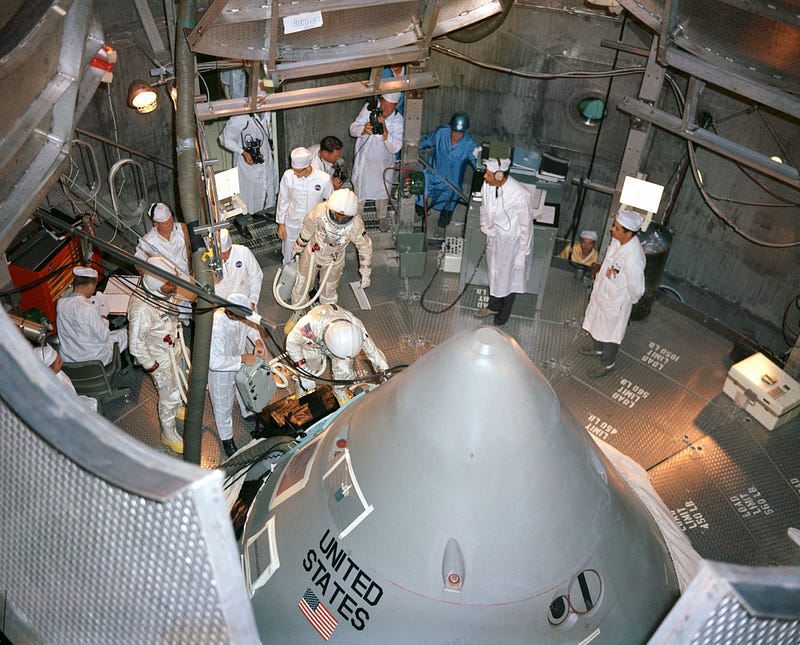
The lessons learned led to each of these issues being more than adequately addressed, and led to a change in the way NASA treated its astronauts and its missions. As famed NASA flight director Gene Kranz, who brought the Apollo 13 crew home, said in the aftermath of Apollo 1,
From this day forward, Flight Control will be known by two words: Tough andCompetent. Tough means we are forever accountable for what we do or what we fail to do. We will never again compromise our responsibilities… Competentmeans we will never take anything for granted… Mission Control will be perfect.
When you leave this meeting today you will go to your office and the first thing you will do there is to write Tough and Competent on your blackboards. It will never be erased. Each day when you enter the room, these words will remind you of the price paid by Grissom, White, and Chaffee. These words are the price of admission to the ranks of Mission Control.
It was the most expensive lesson, in terms of lives lost, that had ever been taught in the world of spaceflight up until that point. It was a lesson that led us to never losing another astronaut in space for nearly 20 years. And it was a lesson that, at long last, brought us to set foot on the surface of another world.

Last week marked the 49th anniversary of the Apollo 1 fire, one of the greatest tragedies in NASA history. While very few of us remain who remember Grissom, White and Chaffee, the lessons we learned from their sacrifice should remain throughout all of history: we are forever accountable for both what we do and what we fail to do, and we must never take anything for granted. It can all be gone in the blink of an eye, but we can make ourselves and our work as perfect as possible. And, if we do it right, even the deepest depths of space are within our reach.
Leave your comments on our forum, and check out our first book: Beyond The Galaxy, available now, as well as our reward-rich Patreon campaign!





